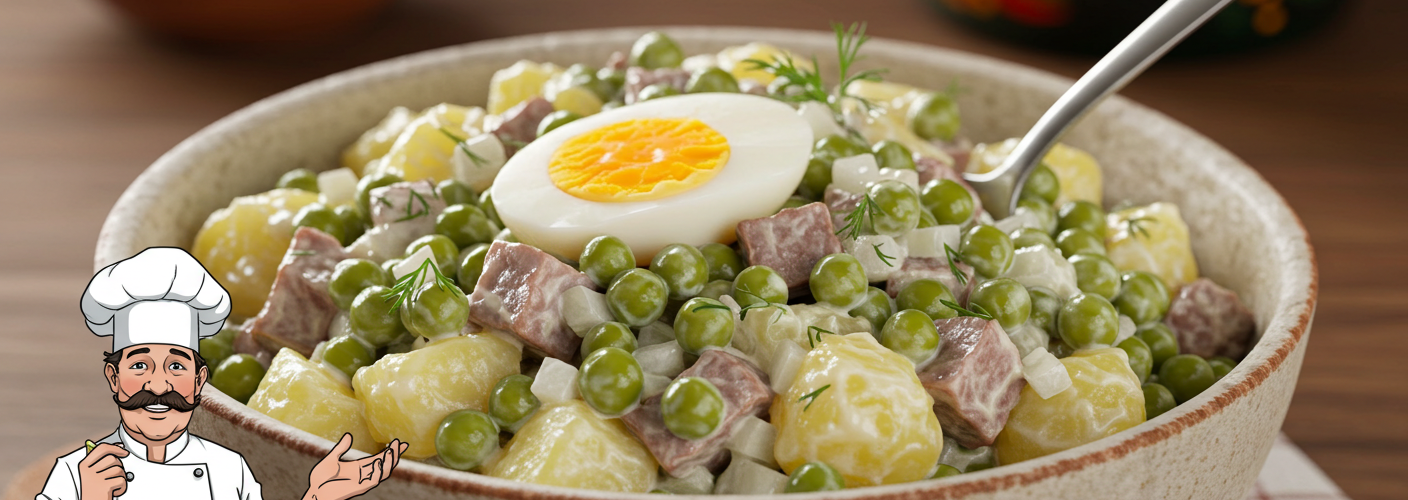When it comes to the world of culinary delights, few dishes hold as much nostalgia and tradition as Olivier salad. Known for its rich flavors and vibrant ingredients, this salad has cemented its place in culinary culture across various countries, particularly in Eastern Europe. Olivier salad, often referred to as Russian salad, is not merely a dish; it’s a celebration of community and family gatherings.
At the heart of Olivier salad is a delightful mix of ingredients, including peas, potatoes, onions, meat, pickles, and hard-boiled eggs, all lovingly bound together by a creamy layer of mayonnaise. Its colorful presentation and versatile nature make it a perfect addition to any festive table, from New Year’s celebrations to weddings and family reunions.
The Ingredients: A Balanced Symphony
The beauty of Olivier salad lies in its harmonious combination of textures and flavors. Each ingredient plays a crucial role in delivering a satisfying bite. Peas add a sweet pop to the dish, while diced potatoes bring a comforting, hearty base. The sharpness of onion provides a delightful crunch, ensuring a balance between flavors. Meat—often boiled chicken or bologna—adds protein and substance, making the salad a fulfilling option for many.
Pickles introduce a tangy twist, cutting through the richness of the mayonnaise and the other ingredients, creating a complex flavor profile that keeps you coming back for more. Finally, the hard-boiled eggs contribute to a creamy texture, enhancing the overall richness of the dish. Together, these ingredients create a delectable medley that is both satisfying and refreshing.
A Dish of Tradition and Innovation
The origins of Olivier salad can be traced back to Moscow in the 1860s, attributed to Lucien Olivier, a French chef. The original version featured luxurious ingredients such as caviar and lobster, but as the dish evolved over time, it became more accessible and adapted to regional tastes. Today, you can find numerous variations of Olivier salad, each with its unique twist, making it a staple in many households.
While the traditional recipe is beloved by many, contemporary chefs and home cooks alike have begun to experiment with the salad, substituting ingredients to cater to various dietary preferences. For example, one might replace mayonnaise with a yogurt-based dressing for a lighter version, or swap out meat for roasted vegetables to create a vegetarian-friendly option. This adaptability ensures that Olivier salad remains relevant and exciting for new generations.
Serving Olivier Salad: A Festive Tradition
When it comes to serving Olivier salad, presentation is key. Many choose to layer the ingredients in a clear glass bowl or on a decorative platter, allowing the vibrant colors of the ingredients to shine. For an extra touch of festivity, some garnish the salad with fresh herbs or slices of lemon.
Olivier salad is not just a side dish; it often takes center stage at events and gatherings, inviting people to share stories, laughter, and good food. It’s a reminder of simpler times and a way to connect with loved ones over flavors that evoke cherished memories.
In conclusion, Olivier salad is more than just a mix of ingredients; it’s a symbol of tradition, adaptability, and the joy of coming together. Whether you stick to the classic recipe or experiment with your own variations, this beloved dish continues to be a favorite for many, transcending borders and generations alike. So, the next time you find yourself at a celebration, keep an eye out for this colorful salad—it’s sure to bring a sense of warmth and nostalgia to the table.




Add comment